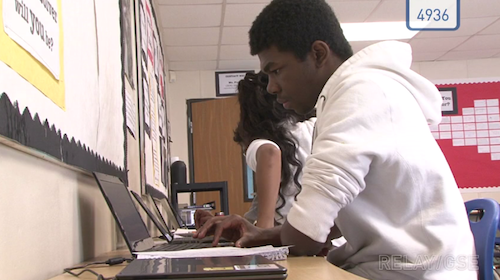
Blended learning can do for educators what it is already doing for students, as long as professional development (PD) designers are as strategic with its implementation as teachers are when building a blended lesson for their students! Significant work has been done on how to create effective blended learning experiences for k-12 students and how important personalization is to buy-in, engagement, and achievement. However, PD and teacher training programs have many times failed to incorporate these same elements of personalization into the ways that they roll out blended to teachers.
Recently, I started working with an elementary school in Seattle, WA, that is launching a whole-school blended model. Instead of rolling it out with a “one-size-fits -all” approach, the blended support specialist and I have been collaborating on a blended approach to supporting teachers through the Relay Blended modules in a personalized manner. Effectively blending your professional development means that leadership, blended teacher leaders, and/or district support staff need to roll out blended for teachers with the same thoughtfulness that they expect teachers to implement blended in their classrooms. Here are a few key ways to start blending your own teacher prep today!
5 Key Ways to Blend Teacher Prep
1. Introducing Choice:
Choice around path and pace is one way that blended teachers infuse personalization into their instruction. This same technique can be used to support teachers in a blended manner. When possible, add in a component where teachers are given a choice around their path (how to access the material: through an online module, small group discussion, or independent reading) and pace (timing of a task and/or implementation of a strategy). This allows teachers to access the material in a personalized fashion and gives them added support when needed.
2. Utilizing online resources:
By allowing teachers access to online resources, such as current research/articles on blended, online teacher prep modules, and/or examples from other schools doing the work, you are giving teachers the ability to explore and engage with the content in their own way. This allows for an easier translation to their own practice and classroom—as long as you follow it up with some blended best practices. Examples of best practices are: asking key discussion questions, checking-for-understanding and hosting focused workshops. These strategies will enable you to use the resources in a truly blended fashion, and not just as an independent online component.
Online blended teacher prep:
- Relay’s FREE Blended Learning modules
- Silicon Schools & Clayton Christensen Blended Learning MOOC on Khan Academy
Key Blogs and email Subscriptions:
3. Using data to inform:
In the past, data and feedback were used narrowly to measure explicit outcomes or to evaluate target benchmarks. In order to switch to a blended model, this approach needs to shift to using data, feedback, and observations together to support teachers throughout the PD cycle, from identifying a teacher’s unique starting point to iterating on current approaches in order to reach larger goals.
4. Building focused groups:
Professional development shouldn’t be one-size-fits-all. For instance, just as we build focused direct instruction groups for students, we should approach teacher support in a similar manner. By using data to inform grouping, we can engage teachers by finding their shared access points and building resources and support that is focused on their collective small-group needs.
5. Model best practices:
A good rule of thumb is: If you wouldn’t present material to your students in that way, don’t do it to teachers! Always model what you hope to see in the classrooms when presenting, so that you can both engage your audience and showcase the new structure/model/design in a tangible manner.
When rolling out blended at a school, you need to think about the variety of learners you have on your staff. You may have some teachers who are excited about trying something new, some who are scared, resistant, or who just need some support to understand the rationale. This is why it is so important to blend your teacher training like we do our instruction in classrooms—so that you can find individualized ways to not only engage your staff, but to truly support them where they are at!

